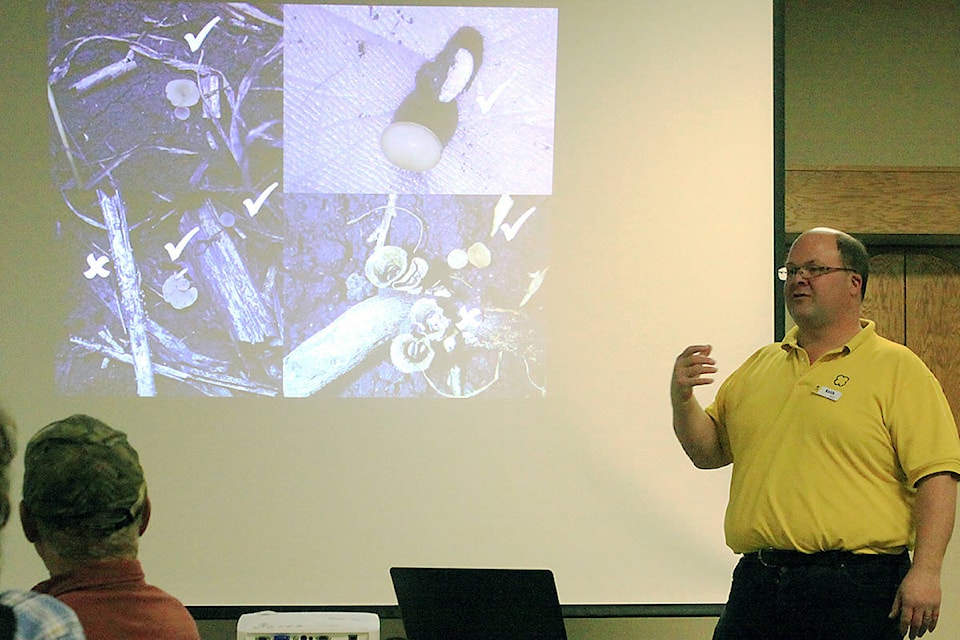While there were plenty of topics on the table, the big focus was on a crop that many farmers in the area rely on — canola.
Speakers at a growers information session Nov. 17 at the Ponoka Legion, sponsored by Crop Production Services, talked about chemical and fertilizer usage as well as disease management.
The main talk of the day came from Keith Gabert, an agronomy specialist with the Canola Council of Canada. He focused on improving yields to the council’s goal of an average production of 52 bushels per acre by 2025.
“Some of that increase will come from holding farmers back from swathing too early, which tends to leave about 10 per cent of yield or about two bushels on the table,” he said.
More bushels will come with better pest and disease management, enhancing plant establishment and fertility, finding the variety that is right for that field, a good crop rotation and scouting to ensure common problems like flea beetles and sclerotinia are found early.
“There are solutions to these and a variety choice that will fix each of those, if you manage them correctly. You just need to pick the right one for your farm and it may not be the same as the neighbour,” Gabert said.
“Most of you have hit that 50 or more mark, so how are we are thinking about meeting that challenging target across western Canada?”
Gabert provided five tips that will help hit that target — choose the variety you grow carefully so it’s the one that will bring value to your farm; put enough seed in the ground taking into account moisture and other factors as it can set a field’s yield potential; fertilize with a goal in mind; scout, scout again and keep scouting so you know what’s wrong and can fix it in the future; and, swath at 60 per cent seed colour or consider straight cutting.
“It all sounds simple, but it takes some work and the most successful are those either swathed later or ones that straight cut,” he added.
